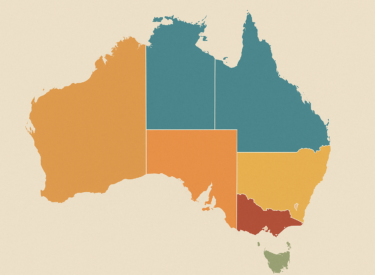Ever eaten that last slice of pizza, even though you’ve had enough? Or polished off kids’ leftovers, despite already feeling full?
To understand what’s happening – and how to fix it – let’s explore your body’s “stop eating signals” (satiety signals).

The science of satiety signals
Your body’s satiety signals kick in when your brain senses you’ve consumed enough of the nutrients you need.
Your brain takes its cue from sources such as:
- stretch signals from your gastrointestinal tract (like your stomach and intestines), which indicate the volume of foods and drinks you’ve consumed
- “satiety hormones”, such as cholecystokinin (CCK) and peptide YY, which are released into your bloodstream when particular nutrients from your digested food come into contact with certain parts of your gastrointestinal tract
- nutrients from your digested food, which pass into your blood stream and can exert satiety effects directly on your brain
- leptin, the hormone primarily produced by adipose tissue, which stores excess nutrients from your food as fat. The more fat you have in your adipose tissue, the more leptin your adipose tissue releases into your blood stream, and the more your brain senses you’ve consumed enough of the necessary nutrients.
Your brain puts all those sources of information into a “satiety algorithm” and, at a certain point, sends you the signal that it’s time to stop eating.
This helps explain why, if you aren’t getting enough of the nutrients you need overall, you might feel unsatisfied and keep eating even when you’re full.

Shutterstock
I’m eating nutritious foods so why can’t I stop?
Your body’s satiety signals are easy to ignore – especially when you’re tempted with varied and tasty foods and you feel social expectations to eat.
Add an alcoholic drink or two, and it may get even easier to ignore satiety signals.
Other factors may include your ethics about not wasting food, and habits such as routinely eating dessert after dinner – regardless of how you feel.
Eating is about emotions, too
If you’ve ever overeaten while feeling bored, fearful, stressed, lonely, tired or guilty, you’ve discovered that food can improve your mood (at least temporarily).
Indeed, some of the hormones and natural brain chemicals involved in satiety signalling have been shown to affect mood.
If you regularly keep eating when you’re full, it’s worth exploring possible underlying psychological contributors.
Depression, anxiety and stress (check this test to see if you’re experiencing the symptoms) have been linked to overeating.
So has post-traumatic stress disorder – and no, you don’t have to be a war veteran to have PTSD.
This survey has a checklist of symptoms.
Eating disorders such as binge eating disorder or bulimia nervosa are also linked to overeating (check this survey of symptoms to see if any apply to you).
Having had adverse experiences in childhood can also play a role in habitual overeating.
Try this quiz if you suspect this may apply to you.

Shutterstock
How to stop eating when you’re full
If you suspect psychological contributors to overeating, know there are scientifically proven treatments that can help.
For example, depression and anxiety now have well established treatment pathways.
PTSD can be treated with proven therapies.
Eating disorders can be treated effectively with cognitive behavioural therapy for eating disorders, among other treatments.
Your local healthcare professional can help you find treatment options, and some are free.
Other strategies you may like to consider are listed below:
- keep a diary of your satiety signals so you learn to recognise them. Every time you eat, note whether you feel unsatisfied, satisfied or over-satisfied. Aim for “satisfied” every time. If you have an iPhone, you can use the free app I co-designed with Zubeyir Salis (a contributor to this article), based on scientific evidence (Wink by Amanda Salis)
- when you recognise yourself eating to the point of feeling “over-satisfied”, note what’s happening in your satiety diary (or app). Feeling unworthy? Jealous? Irritated? Tired? Or are you procrastinating about something? Think about what you really need; give yourself more of that instead of food
- choose a nutrient rich diet with a minimum of ultra processed foods, and heed cravings for particular healthy foods. This will help deliver the nutrients you need so your satiety signals are activated. Use this free, evidence-based quiz to see if you’re on track for a nutrient rich diet
- be the boss of how much food is served to you, so that only the amount you feel you can eat appears on your plate
- unless you need to eat, put obstacles between yourself and food. Leftovers can be frozen or stored (safely). Move away from the table once your satiety signals have told you it’s time to stop.
May you always be “satisfied”.
Guest AUthor: Amanda Salis, NHMRC Senior Research Fellow in the School of Human Sciences, The University of Western Australia
Zubeyir Salis contributed to this article.![]()
This article is republished from The Conversation under a Creative Commons license. Read the original article.














